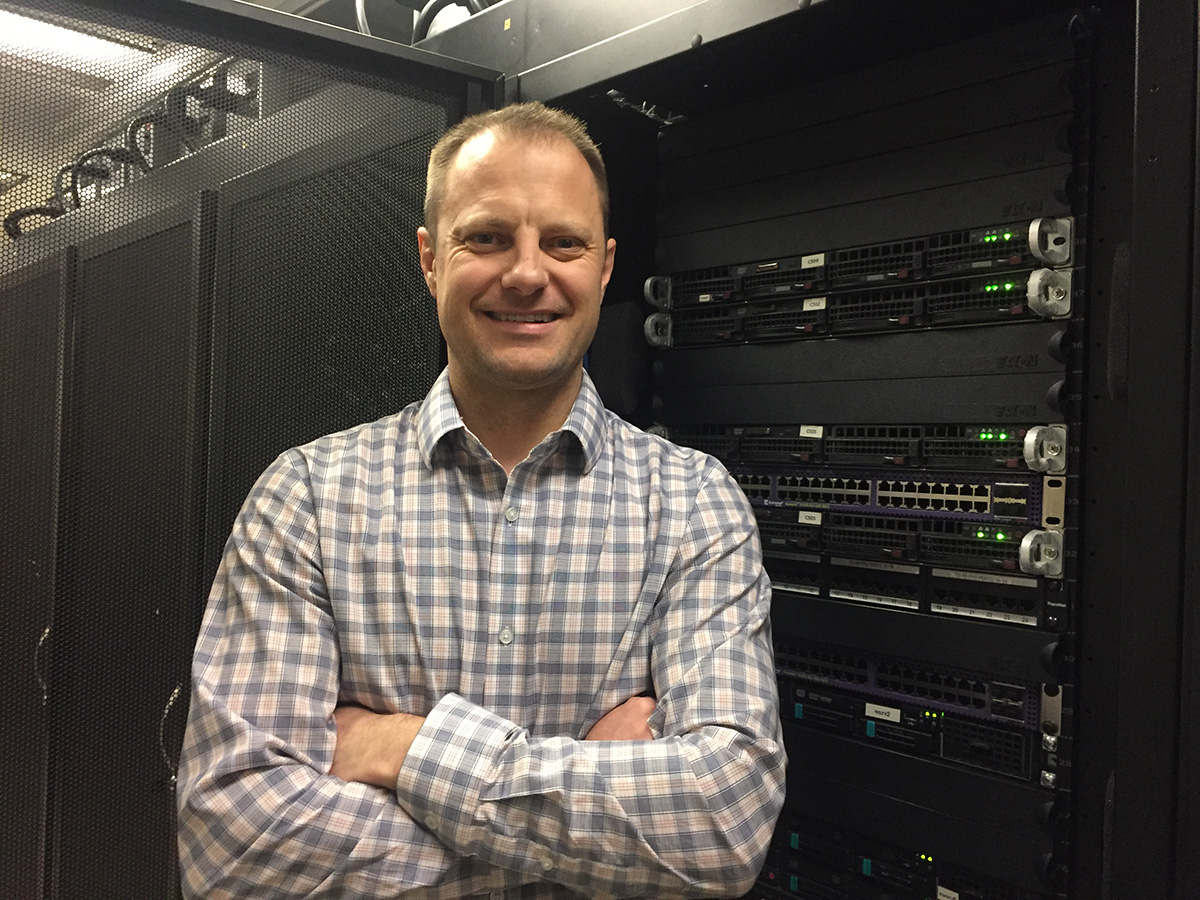Aaron Stanton: Applying theory to real world problems
Suzette Chan - 16 April 2020
As an undergrad, Aaron Stanton loved math and physics, leading him to a BSc in Geophysics and a career in the seismic data processing industry. Four years later, he returned to the University of Alberta to deepen his understanding of signal processing with studies in a PhD program. Now he’s applying his theoretical knowledge to real-world seismic data to image the earth’s interior and keeping up to date with new technology.

Aaron Stanton uses geophysics skills every day at Key Seismic Solutions. (Photo supplied.)
Can you tell us what made you choose Geophysics, and about your education and your professional career?
Early in my undergrad I realized that I loved Math and Physics. I found the introductory courses in Geophysics incredibly engaging, and there was a good group of students in the program that made the experience even better. My favorite courses were in seismology and seismic imaging (taught by Professor Jeffrey Gu and Professor Mauricio Sacchi), which led to me to pursue seismic data processing as a career after graduation. After graduating I worked in the US, the UK and Nigeria for several years before deciding to return Edmonton to pursue a PhD in Geophysics in the Signal Analysis and Imaging Group (SAIG) consortium, headed by Professor Sacchi. I came to know Key Seismic Solutions as an industrial sponsor of SAIG, so after graduating I had a pretty good idea of where I wanted to work.
Can you tell us about your current job?
At Key Seismic Solutions we use seismic data to image the earth's interior. In my role I research seismic data processing and imaging algorithms and I write software to implement these technologies.
Do you employ any skills, knowledge, or methods from your time in the geophysics program to your work now?
I feel the time spent toiling away in the computer lab during my undergraduate and graduate degrees was time well spent. Having the ability to prototype a solution to a problem in Matlab, Python, or Julia has been incredibly helpful in my current role, and it is also a valuable skill for any self-directed learning you might do. I also remember wondering, "What is the point of Linear Algebra?" Now I use Linear Algebra constantly!
What part of your current job do you like?
It is exciting to see new mathematical theories being applied to real world problems, and I love staying up to date with the latest technology.
What advice would you give to undergraduate and graduate students studying Geophysics?
My advice to Geophysics students would be that learning doesn't stop after graduation, and to pursue what interests you most.
What developments or trends do you see in the geophysical industry in the coming years?
Compressed sensing and machine learning are transforming many disciplines; the geophysical industry is no exception. Compressed sensing is making it possible to acquire datasets at sampling rates that were previously considered impossible, while machine learning is allowing routine tasks to be automated with high precision. These technologies have not yet reached their full capabilities.
This profile is part of our Geophysics Careers series.